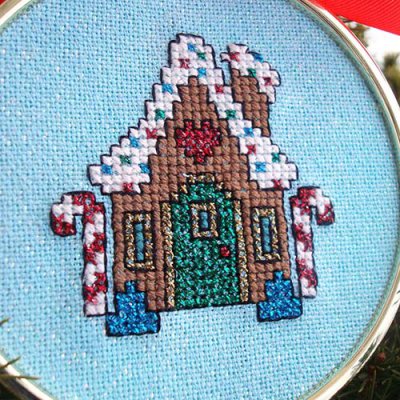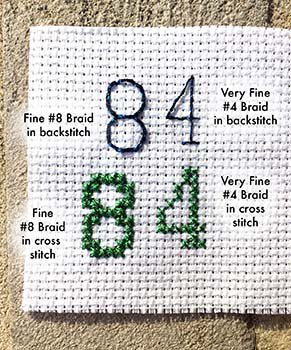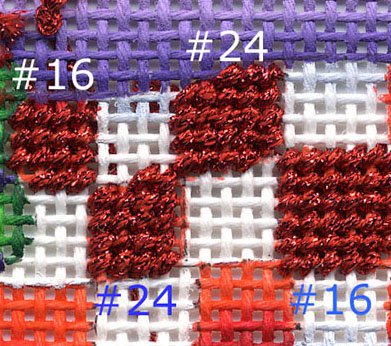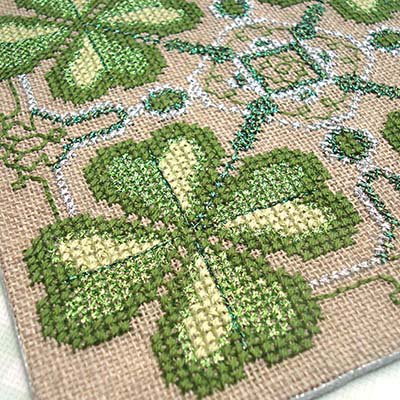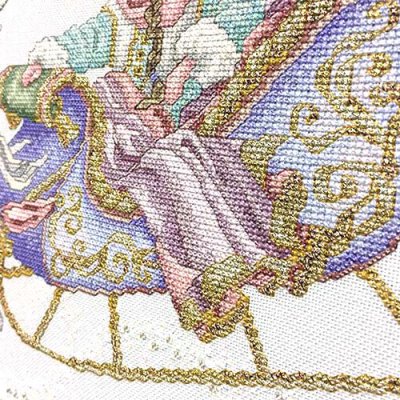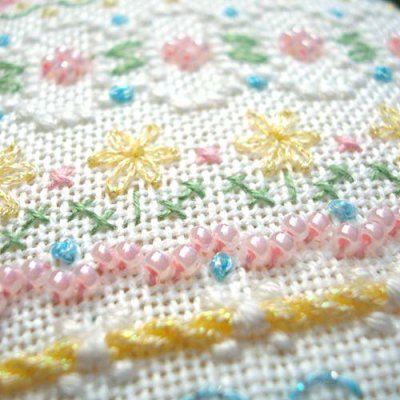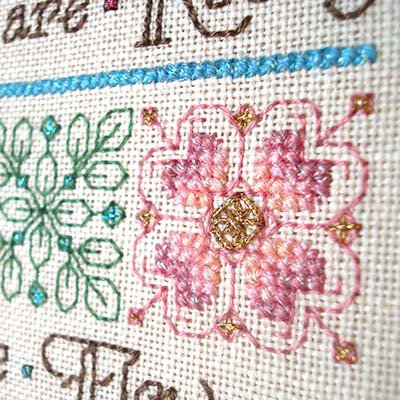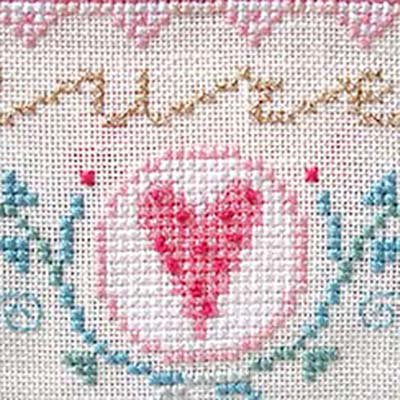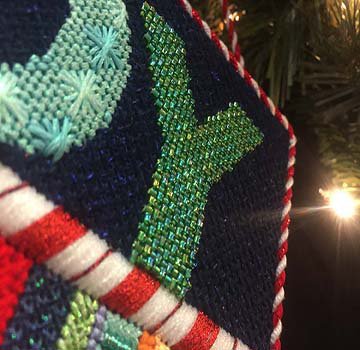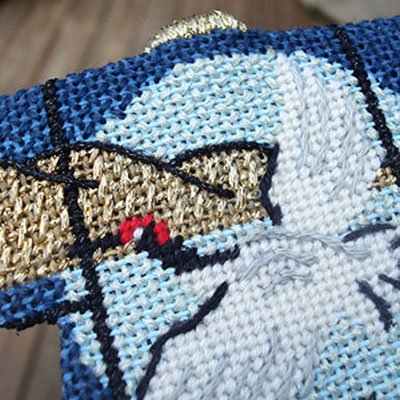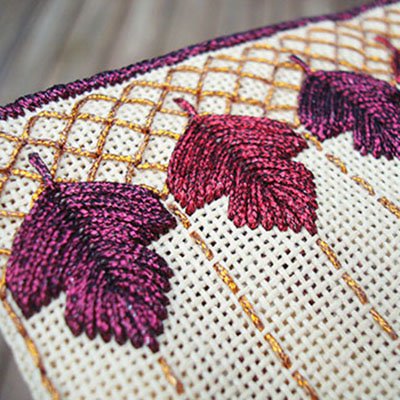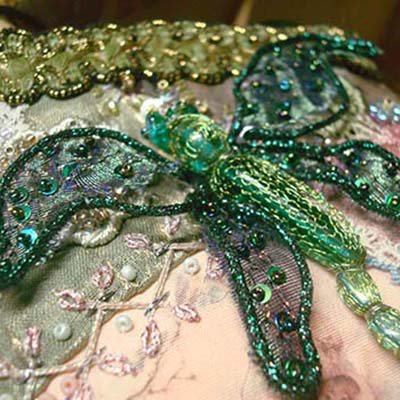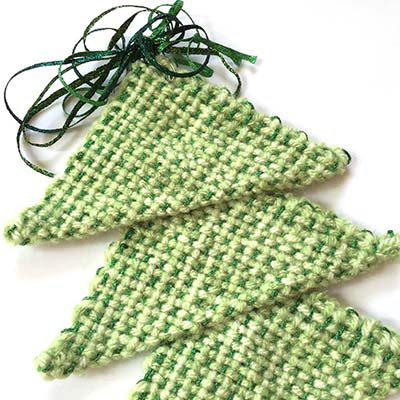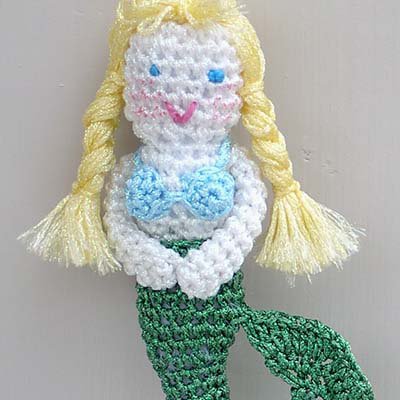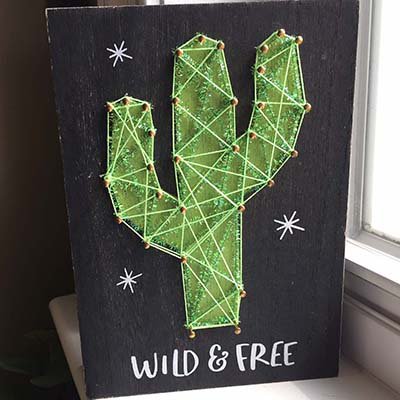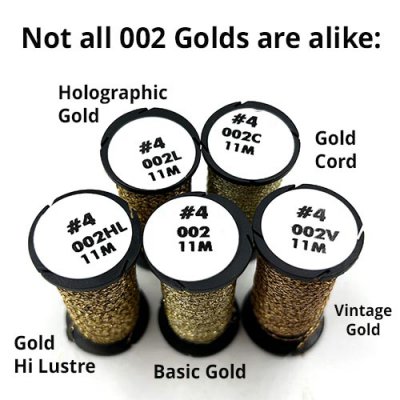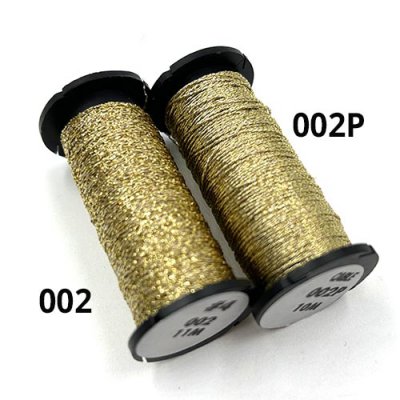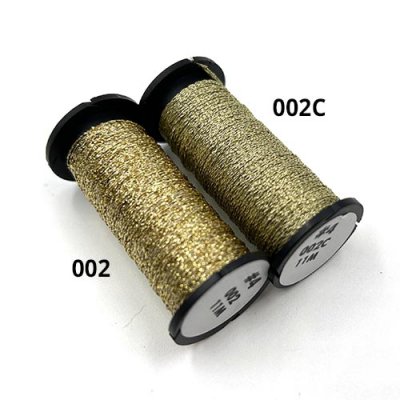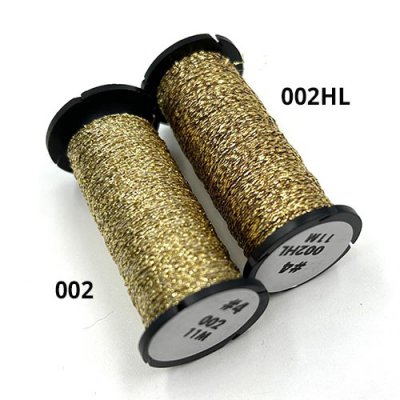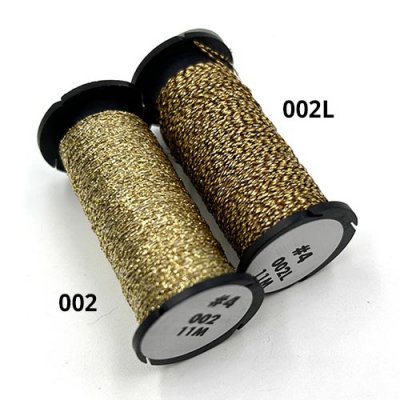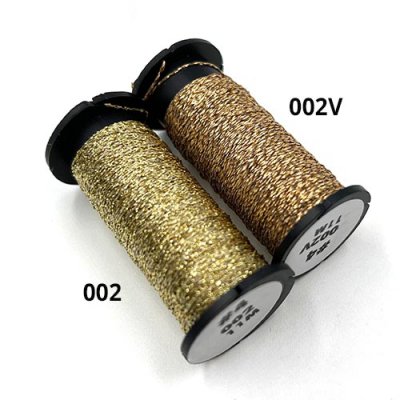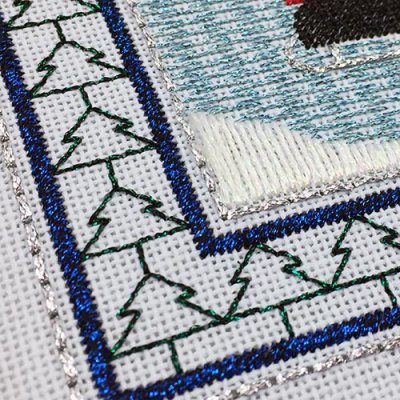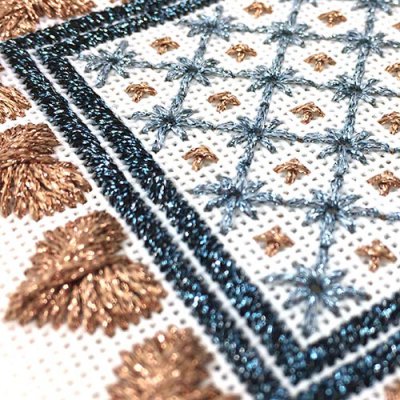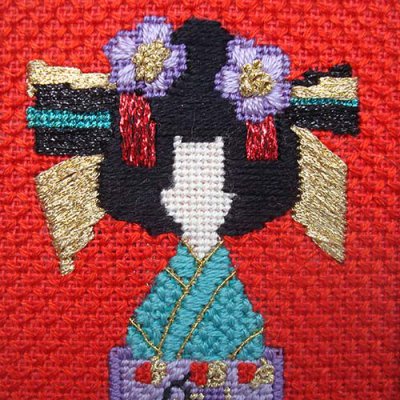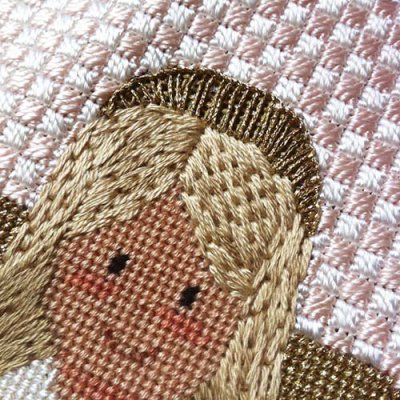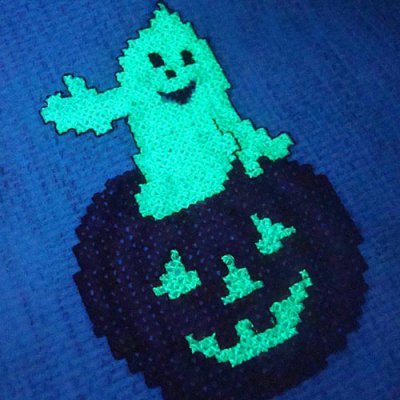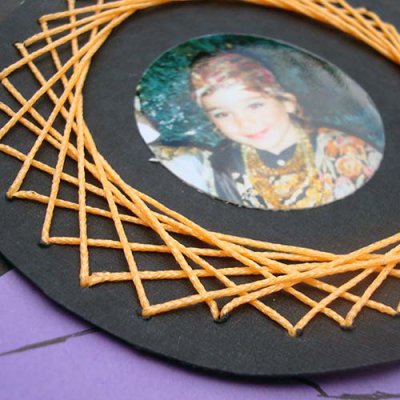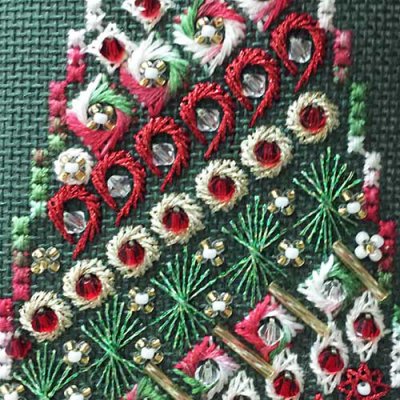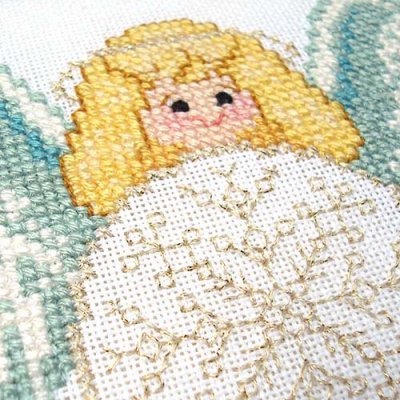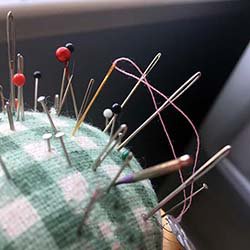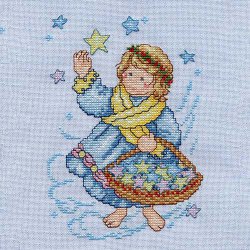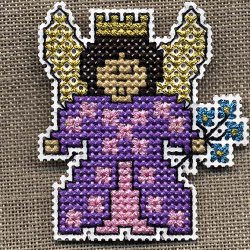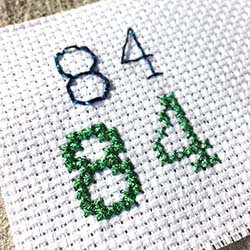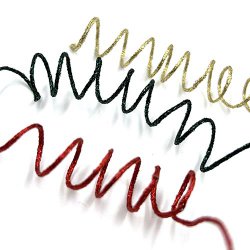Braid stitching tips
Which size Braid do you need?
Choose the size of Braid based on the size of your needlepoint canvas, cross stitch fabric, or embroidery fabric, or your desired stitches. Couching stitches, for example, can use any size Braid. Cross stitches, on the other hand, need smaller Braids for 14-count, 16-count, 18-count etc. Needlepoint can be done using many stitches, so you may want to vary Braid size based on your stitch selection.
What do the numbers mean?
The numbers indicate how many strands of the raw materials are used to make the size; for you, the most important thing is the smaller the number in the Braid name, the smaller the thread. So Very Fine #4 Braid is our thinnest metallic, Fine #8 Braid is twice the size of #4 Braid, Medium #16 Braid is twice the size of #8 Braid etc. Heavy #32 Braid is the thickest.
What do the letters in the color numbers mean?
Kreinik Braids come in different metallic finishes, designed to give different effects and looks to a design. HL in the color number means hi lustre, V means vintage or antiqued, L means holographic, F means fluorescent, C means corded. These special effect colors may be a bit thicker and stiffer, so experiment with going down a Braid size if needed.
What is the material content?
It depends on the color:
- 100% polyester (holographic colors)
- 65% polyester/35% rayon (regular colors)
- 62% polyester/38% nylon (hi lustre colors)
- 64% polyester/36% nylon (vintage colors)
- 80% polyester/20% nylon (glow in the dark colors)
Top tips
Have fun with Kreinik Braids, adding light, color, texture and dimension to a design. They make things more visually exciting, realistic or whimsical. Here are more tips on using Kreinik Braids in handwork:
- Use short lengths of thread-about 45cm (18 inches) or less-to avoid excessive abrasion when pulling the thread through the ground fabric or canvas. The more we pull a strand through fabric or canvas, the more 'wear' it causes on the thread. Using shorter lengths will maintain the quality of the thread, plus reduce tangling as shorter lengths are easier to control (less knotting!).
- Needle selection is one of the most important decisions in getting a thread to behave. If you are stitching on fabric, use a needle large enough to 'open' the hole in the fabric sufficiently and allow the thread to go through more easily. A too-small needle will cause a thread to fray, knot, tangle. Make sure your needle is clean and free from burrs, and go up a needle size to help the thread move through the fabric easily.
- For a quick-and-easy, take-anywhere threading technique, cut a small strip of paper and fold in half. Place the fold through the eye of the needle and open the two ends to insert the thread in between. Gently pull the paper through so the thread is brought with it

- You may wish to moisten the Braid with a slightly damp sponge to help relax the thread and thus reduce twisting and knotting.
- The way a needle is twisted during stitching, combined with the twist of the thread, can cause any thread to twist on itself. Stitch slowly for greater control, and let your needle hang frequently to let the thread untwist.
- Stitch using the 'stab' method rather than the 'hand sewing' method to reduce tangling, working your stitches in two movements: up vertically then down vertically through the fabric.



